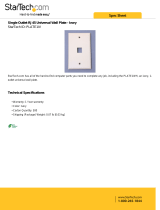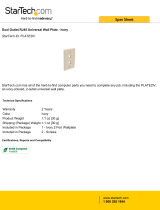
www.fmiproducts.com
124378-01D2
WARNING: Improper installation, adjustment, altera-
tion, service or maintenance can cause injury, property
damage or loss of life. Refer to this manual for assis-
tance or additional information. Consult a qualied
installer or local distributor.
TABLE OF CONTENTS
Safety .................................................................. 2
Specications ...................................................... 3
Fireplace Installation............................................ 6
Venting Installation .............................................. 8
Firebrick Wall Installation ................................... 13
Optional Gas Line Installation............................ 16
Glass Door Installation ...................................... 17
Operation and Maintenance Guidelines ............ 18
Parts ................................................................. 20
Technical Service............................................... 27
Replacement Parts ............................................ 27
Accessories ....................................................... 28
SAFETY
FOR YOUR SAFETY
• Do not store or use gasoline
or any other ammable vapors
or liquids in the vicinity of this
or any other appliance.
• Due to high temperatures, the
appliance should be located
out of trafc and away from
furniture and draperies.
• Do not place clothing or other
ammable materials on or near
the appliance.
• Never leave children unat-
tended when a re is burning
in the replace.
WARNING: Use solid wood
or processed solid fuel relogs
only. When processed wood fuel
re logs are used, do not poke or
stir the logs while they are burn-
ing. Use only re logs that have
been evaluated for the application
in replace and refer to re log
warnings and caution markings
on packaging prior to use.
This replace is not intended to be
used as a substitute for a furnace
to heat an entire home. Use for
supplemental heat only.
IMPORTANT: Check local codes
before installing this replace.
Before beginning the installation of the
fireplace, read these instructions through
completely.
• This FMI PRODUCTS, LLC replace and its
components are safe when installed accord-
ing to this installation manual. Unless you
use FMI PRODUCTS, LLC components,
which have been designed and tested for
the replace system, you may cause a re
hazard.
• The FMI PRODUCTS, LLC warranty will
be voided by and FMI PRODUCTS, LLC
disclaims any responsibility for the follow-
ing actions.
a. Modification of the fireplace, com-
ponents, doors, air inlet system and
damper control.
b. Use of any component part not manu-
factured or approved by FMI PROD-
UCTS, LLC in combination with a FMI
PRODUCTS, LLC replace system.
Proper installation is the most important step
in ensuring safe and continuous operation
of the replace. Consult the local building
codes as to the particular requirements
concerned with the installation of all factory
built replaces.
WARNING: Do not install a
replace insert in this box unless
the manufacturer's instructions
with the insert specically state
this replace has been tested for
use with this insert.























